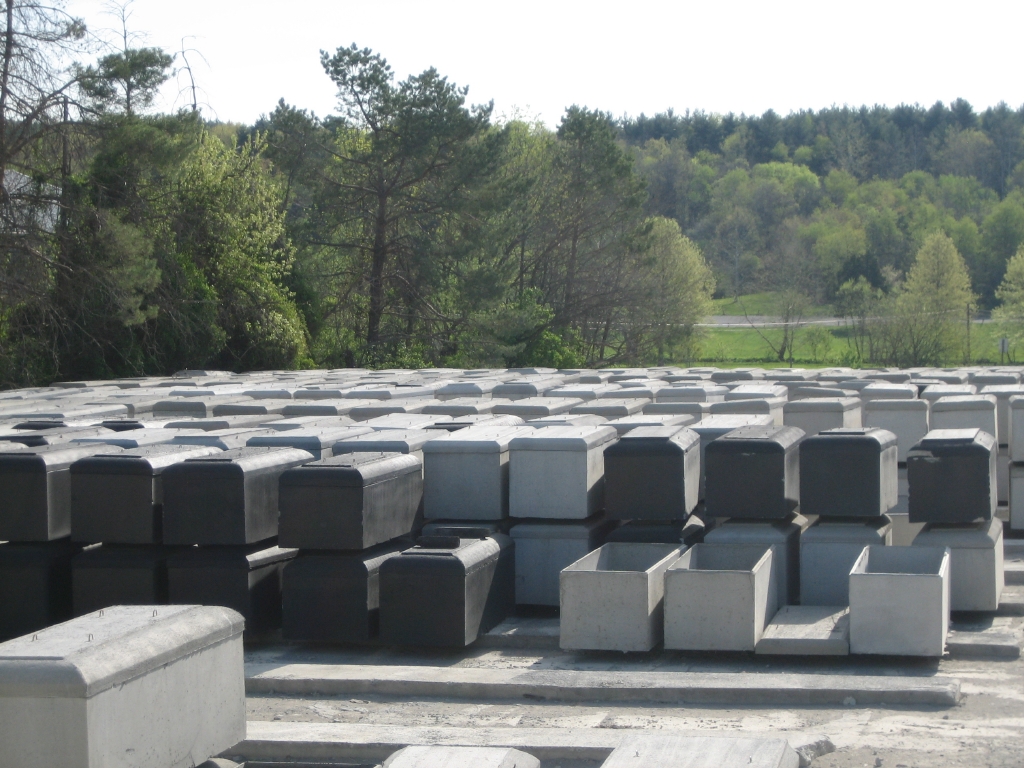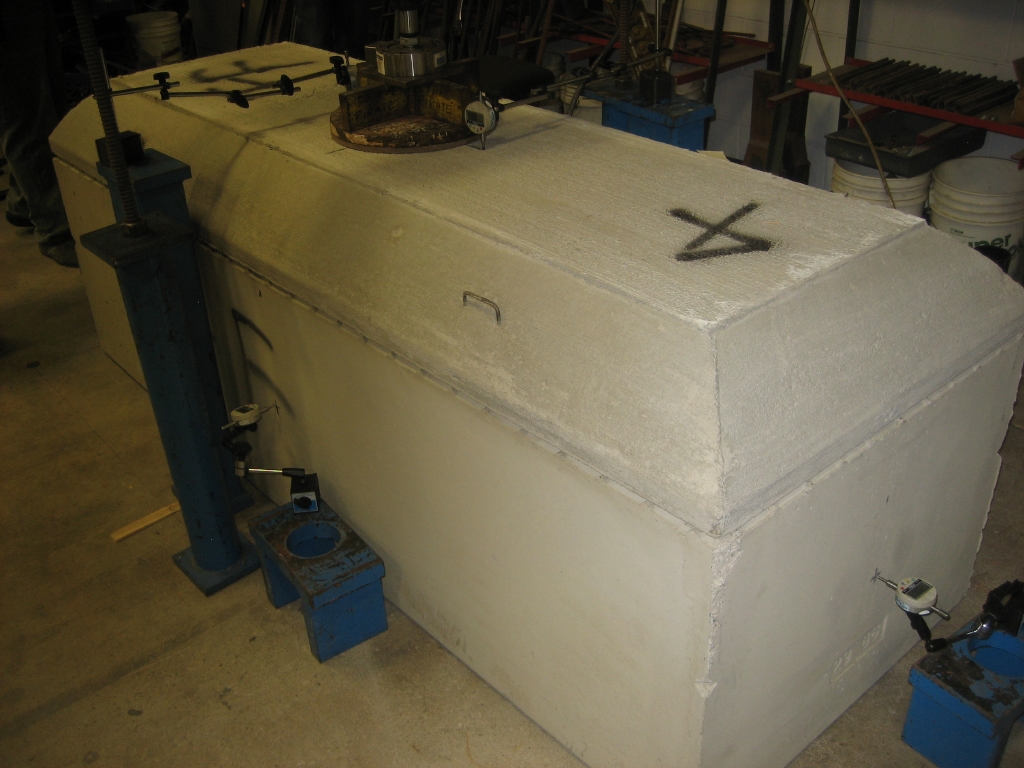Testing Results- BarChip Reinforced Burial Vaults
In late 2010 a Burial Vault Manufacturer in The United States undertook a testing program to find a new, cost effective burial vault design. The manufacturer submitted designs for testing to a structural laboratory, including a number incorporating Barchip’s structural synthetic fiber concrete reinforcement.
Macro synthetic fiber reinforcement provides many benefits when used in precast elements. Most notably, manufacturers are able to;
- Increase production speeds
- Lower material costs
- Lower labour costs
- Potentially reduce element thickness (no concrete cover required)
- Reduce impact damage during storage and transport
- Improve the durability and performance of the element
Furthermore, BarChip reinforced precast elements are far more durable and will never rust.
Testing for the burial vaults was performed in conformance with the Catholic Cemeteries Internment Specifications (CCIS) 210.6 Standards for Outer Burial Containers.
CCIS 210.6 states “The container must test favourably at a strength level sufficient to withstand a static load of 5,000 pounds per square foot, applied to the top surface. Such a load may not produce a deflection of more the ½ inch on the top surface, nor more than 3/8 inch on the sidewall.”
To test the vaults a steel reaction frame was erected over the vault in order to mount a 10-ton hydraulic ram that was used to apply the load to the vault cover. A manual hydraulic pump controlled the ram and the applied load was measured with a calibrated 20,000 lb capacity load cell in conjunction with a digital strain indicator.
The load was applied to the vaults via a 1 in. thick steel circular loading plate and a ½ inch thick neoprene bearing pad, each measuring 1 sq ft in area. Load was applied in 500lb increments until the maximum load was reach. At each 500lb increment the corresponding deflections were recorded.


Of the vaults that were tested three met the performance criteria set out above, all comprising BarChip synthetic fiber reinforcement. The details of their design and performance are listed below.
[et_bloom_inline optin_id=”optin_4″]
Vault 3: Labelled ‘#9 G Box- No Wire, Three Long Rods, Five Short Rods’
Vault 3 had dimensions of 88 3/8 in. x 31 ½ in. x 27 3/8 in. with a 2 7/8 in. thick lid. The vaults lid was reinforced with a combination of BarChip macro synthetic fibers, three 3/8 in. diameter steel reinforcing rods (long) oriented along the longitudinal axis and five 3/8 in. diameter steel reinforcing rods (short) oriented along the transverse axis. The base was exclusively reinforced with BarChip fibers.
Testing on Vault 3 showed that this design was able to meet both the maximum applied load and deflection requirements set out in CCIS 210.6. The performance of Vault 3 is charted below.

Vault 4: Labelled ’29 Basic- No Wire, Two 1/4 in. Rods Cvr’
Vault 4 had dimensions of 89 1/2 in. x 32 1/2 in. x 24 in. with an 8 1/4 in. thick lid. The lid of vault 4 is reinforced with a combination of BarChip macro synthetic fibers and two 1/4 in. diameter steel reinforcing rods oriented along the longitudinal axis on either side of the lid at the lifting brackets. The base is reinforced exclusively with BarChip fibers.
Testing on Vault 4 showed that this design was able to meet both the maximum applied load and deflection requirements set out in CCIS 210.6. The performance of Vault 4 is charted below.

Vault 5: Labelled ’29 Basic- No Wire, No Rods’
Vault 5 had dimensions of 89 1/2 in. x 32 1/2 in. x 24 in. with an 8 1/4 in. thick lid. Both the lid and base of Vault 5 are reinforced exclusively with BarChip fibers
Testing on Vault 5 showed that this design was able to meet both the maximum applied load and deflection requirements set out in CCIS 210.6. The performance of Vault 5 is charted below.

Conclusion
Based on the requirements set out in CCIS 210.6 Vaults 3 (reinforced with steel and BarChip), 4 (reinforced with steel and BarChip) and 5 (reinforced solely with BarChip) met the load criteria.
After testing confirmed that a burial vault reinforced exclusively with BarChip macro synthetic fibers (Vault 5) could meet the design requirements set out in CCIS 210.6 the manufacturer made the decision to replace the steel reinforcement in their vaults with BarChip Fibers.
By removing steel reinforcement from precast elements manufacturers are able to reduce costs and increase production times as there is no requirement to store or install steel mesh. Furthermore, BarChip reinforced precast elements are far more durable as BarChip will never rust or corrode.
Barchip’s experienced team can guide you through the design process, providing comparative analysis, structural design and where appropriate complex finite element analysis (FEA). When you design with Barchip, you design with confidence.



